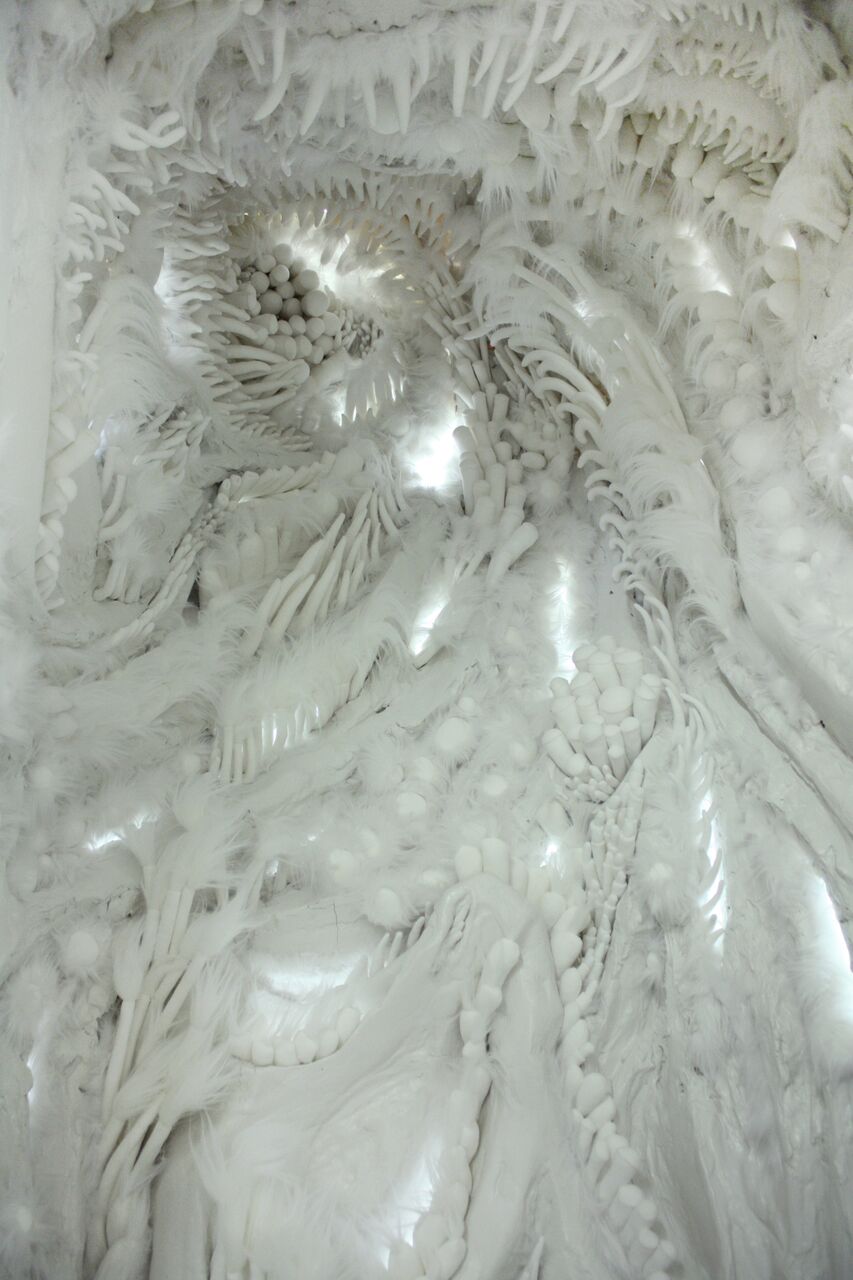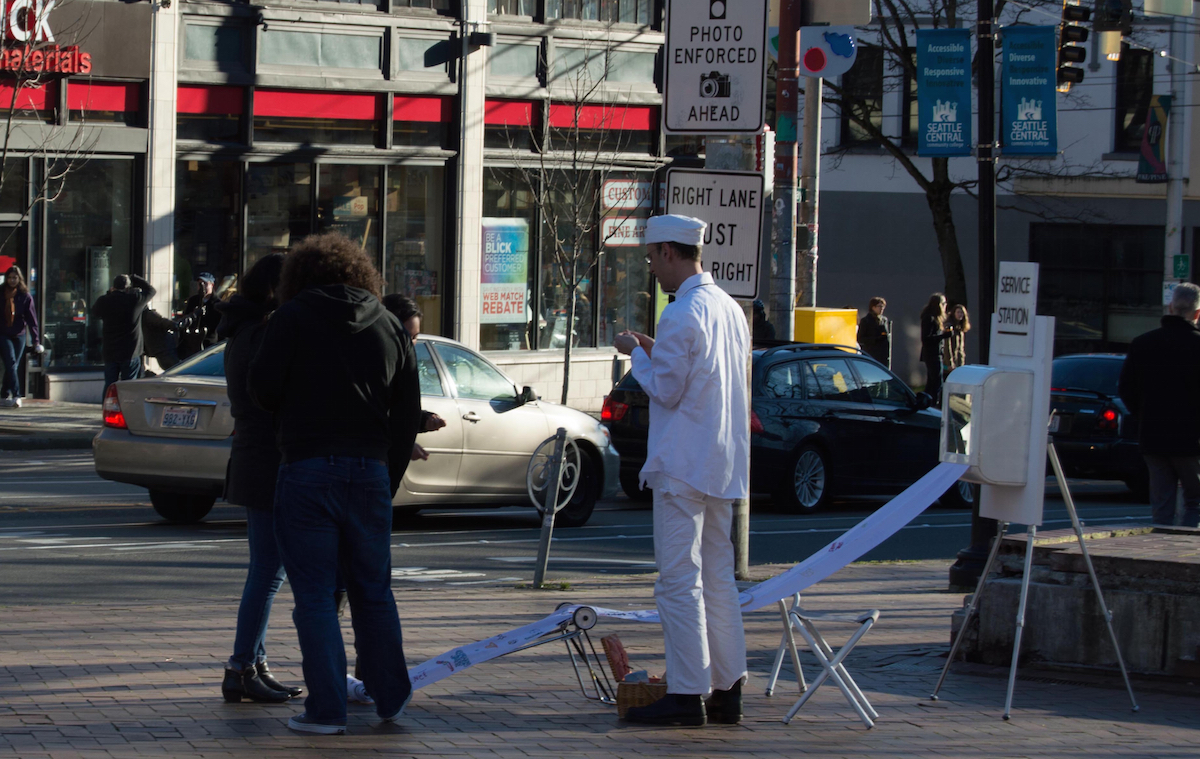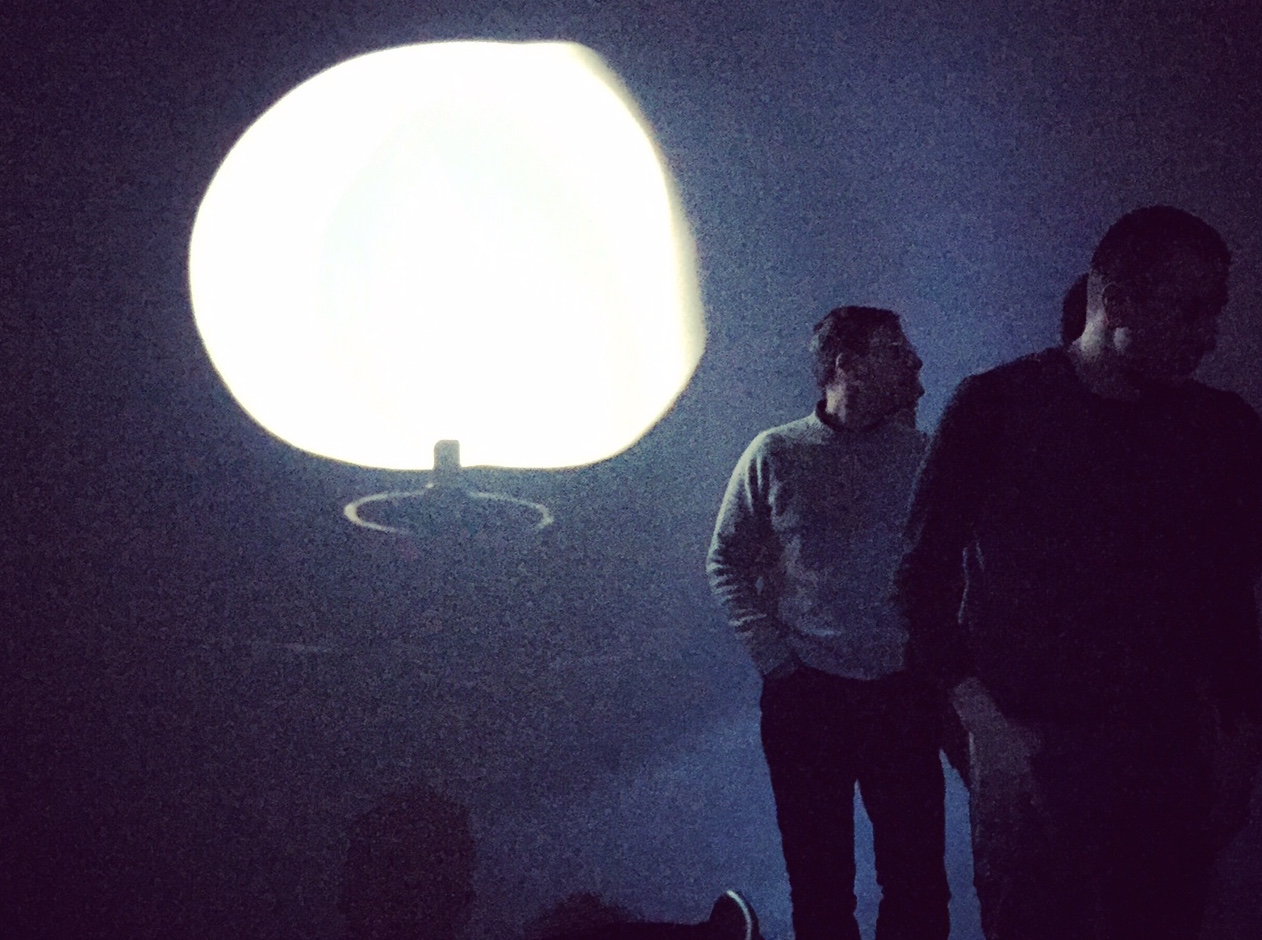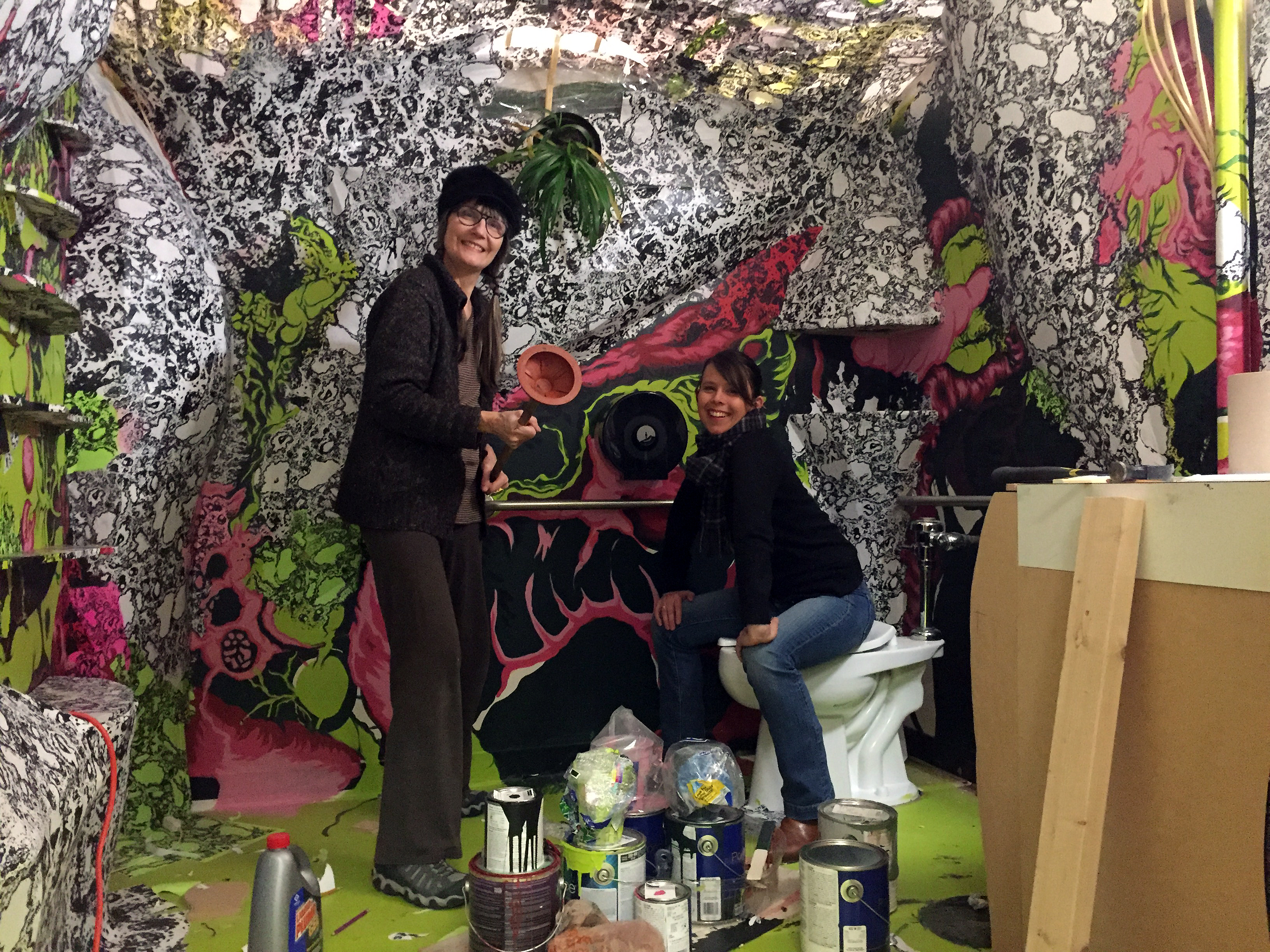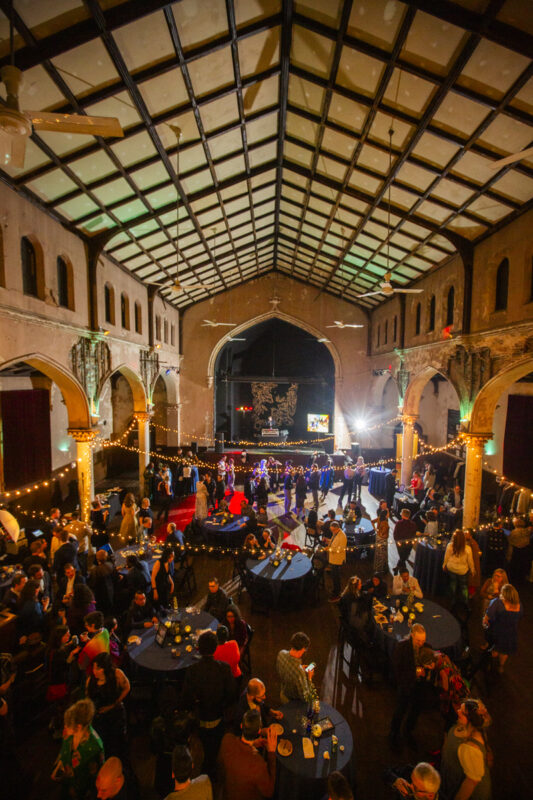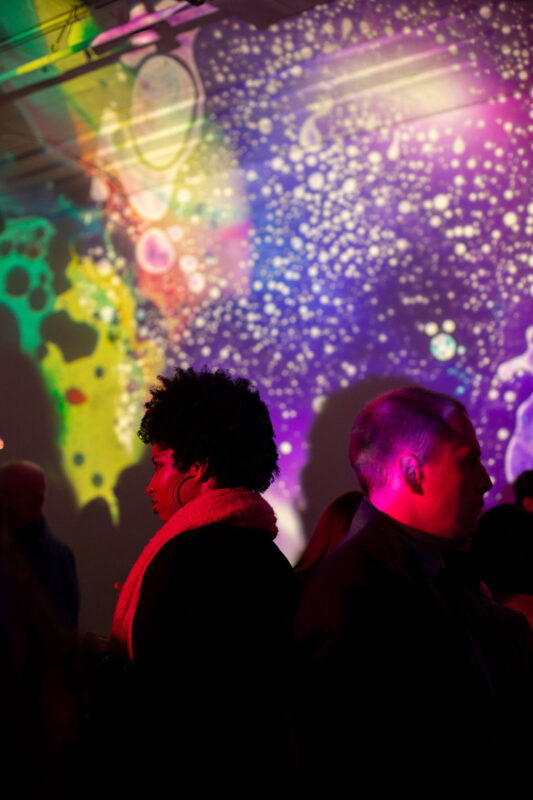School 33 Unveils The Way Out House, A Psychedelic Powder Room by Cara Ober
If she lives to be 80, the average American spends three years of her life in the bathroom. Whether you call it the restroom, the washroom, the powder room, or the loo, it is first and foremost a sanctuary. The bathroom is the only place a human can hang out alone for indefinite amounts of time without interruption. Whether you’re there to “do what needs to be done,” to escape or meditate, a public or private bathroom has the potential to offer an inspiring or even transformational experience.
Many bathrooms offer reading materials in the form of periodicals, graffiti, or stall door newsletters. Some of my favorites have books of poetry on the ready, offering the perfect reading length for a complete and possibly transcendental undertaking. Others feature great art that is surprisingly ambitious for a bathroom, challenging the lame and demure decor found in most. And still others offer a sensory overload of luxurious toiletries: scented lotions, soaps, and hair styling products that proclaim, “You can walk out of here as a better looking, better smelling, more glamorous version of yourself.”
What most bathrooms do not do, however, is to reflect the natural processes that they are designed for. Although hand sanitizer, emphatic employee wash hand directives, and air fresheners are there for a reason, it’s rare for a bathroom to acknowledge it’s own integral role in the act of digestion and elimination.
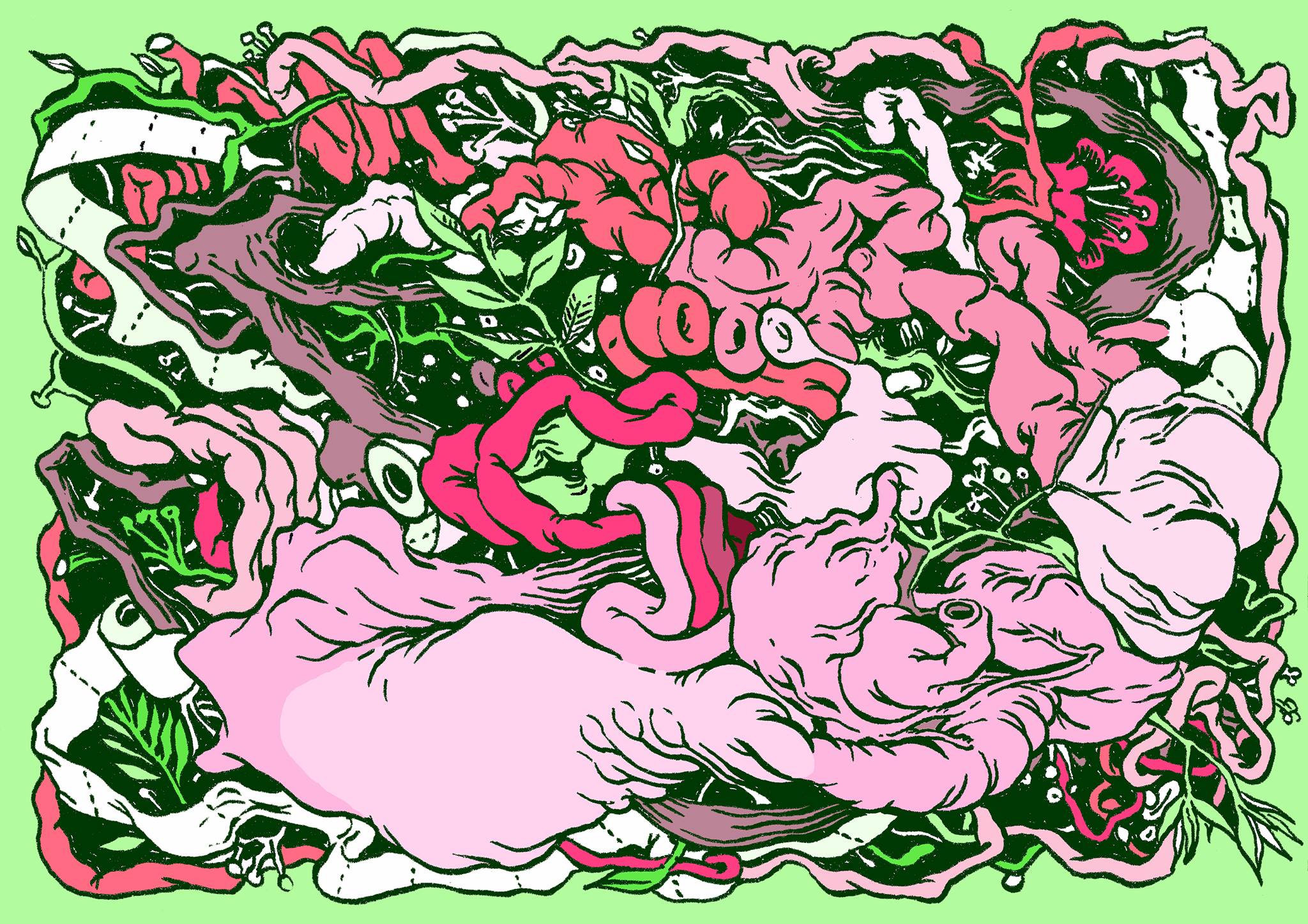 Way Out House prototype drawing by Amanda Burnham
Way Out House prototype drawing by Amanda Burnham
Have you ever visited a bathroom that actually celebrates the act of pooping? Or revels in the experience of peeing? With exception to the vintage print of ‘dirty dogs’ spritzing a picket fence and a cat with bad timing (no surprise – it was created by a French artist), it’s just not done. Although bathing scenes are common in art history, there is very little contemporary art or entertainment media that references the significance of this most hallowed of spaces in modern life.
Is it because this act is simply too vulnerable, too personal, too gross, or too unimportant? Is it because it’s not sexy and we’re supposed to pretend we don’t poop? Or is it something deeper and darker buried in the American psyche, a basic denial of the natural laws that govern us all?
The Way Out House, a collaborative installation by Amanda Burnham and Laure Drogoul, reclaims the private act of elimination as art-worthy through the transformation of the public bathroom at School 33 Art Center. It’s the fourth and final onsite Co-Lab(oration) project funded by a grant from the Robert Rauschenberg Foundation and this multi- sensory, maximal space is “an exploration of toilet culture and digestion, a sanctuary of banal ritual that evokes the cyclical systems of both nature… and the Call of Nature.”
Located just off the main gallery, the large unisex ‘one-sie’ bathroom has been transformed by Burnham and Drogoul to resemble the inside of a stomach. The cave-like ceiling undulates, covered with a repeating wallpaper print depicting stomach cells. Curving shelves beckon and offer periodicals, toiletries, and adorable house plants while mysterious gurgling sounds erupt and video projections meander.
“The bathroom is visually rich, interactive and humorous,” says artist and co-creator Laure Drogoul, a sculptor and performance artist, the first winner of the Sondheim Prize in 2006. “I love the participatory and functional aspect of the space we were asked to transform. The private/public nature of a restroom is a great jumping off point. Amanda and I have lots of ideas about not only toilet culture, but the idea of humans’ place in the cyclic compost of it all, the cycle of life. This bathroom became an organic cave-like environment that brings one into the body and into a compost pile.” The new bathroom will offer a small, on-going library dedicated to the digestive system, composting, toilet products and jokes. The artists will continue to collect toilet jokes to add to the library.
“The bathroom is visually overwhelming — in a good way,” says Burnham, an art professor at Towson University whose past works include large immersive installations featuring hand-drawn urban areas. “It’s packed with details — every single bit of its surface has been considered and worked over, so visitors should definitely poke around and explore.”

As part of the Rauschenberg grant at School 33, the two artists were chosen by a curatorial panel to work together. Like the other three site-specific collaborative installations, on view indefinitely at the non-profit art center, The Way Out House was an opportunity to promote artistic collaboration and to explore what many feel to be the natural working process of artists — in groups and across media and genres.
Although Drogoul is experienced in collaboration, working on performances or theatrical productions, these events have occurred with people she already knows well. This endeavor was much more experimental, since the had never worked together before.
“This endeavor was very much a crap shoot,” laughs Drogoul (no pun intended). “I knew it could be tricky and would require working in a more process-conscious way. It is similar to the improv process of music, dance or theater, but in a visual art context. I work collaboratively quite a bit but not in this way. The element of chance in terms of not choosing who I was to collaborate with is new for me.”
The artists both express gratitude and positivity, in terms of working together and the educational benefits of collaboration. According to Burnham, this project has successfully fused the work of both artists into something unique and new. “It feels to me less like a collage of our distinct practices and more like something of it’s own,” says Burnham.
After her selection for the grant and project, Burnham remembers feeling excited to work with Drogoul. “I’ve long admired her work, and think we share a maximalist sensibility, not to mention an affinity for humor and theatricality,” she says. “We have worked simultaneously in the space throughout much of this, and gaining a window on Laure’s process, as well as sustaining a months long, ongoing conversation about the piece has been fascinating and really instructive.”
“I think it’s pretty normal when you work solo to never externalize the thoughts you have as you make to anyone else,” says Burnham. “Having to do that as part of a dialogue has given me a lot of insight and made me question and consider in a new way the choices I make in my own work. I’ve definitely imagined directions I’d never thought of coming from this.”
The Way Out House is almost finished and will be user-ready for concurrent opening receptions at School 33 on February 12. In addition to the exhibits presented in the three galleries at School 33, the other three Rauschenberg-funded installations will be celebrated, as a culminating gesture. These works include Front Stoop Back Yard in the School 33 garden by Melissa Webb, Linda DePalma, and Kelley Bell, and hallway installations Nanotecture by Jon Latino and Jennifer Strunge, and Pattern Perception by Kyle Bauer, Amy Boone-McCreesh, and Katie Duffy.
Since the bathroom offers unique opportunities for experience as the “ultimate participatory space” and also specific obstacles, the two artists have been careful to select materials that will be easy to clean and maintain, that will be durable longterm.
“We are very much in the thick of it with the installation at this point so it is early to say how my practice has been affected but I can say that working with Amanda has been excellent,” says Drogoul. “We were both excited to make a experiential space and our ideas about the project were very similar, though our mediums are different.”

Author Cara Ober is Founding Editor at BmoreArt.
Join the artists on February 12, 2016, the opening reception for The Way Out House, as well as School 33’s three new Feb-April exhibitions. Visit the following link for more info: http://on.fb.me/1nvRPLY.
Images courtesy of School 33 Art Center and also by Cara Ober.
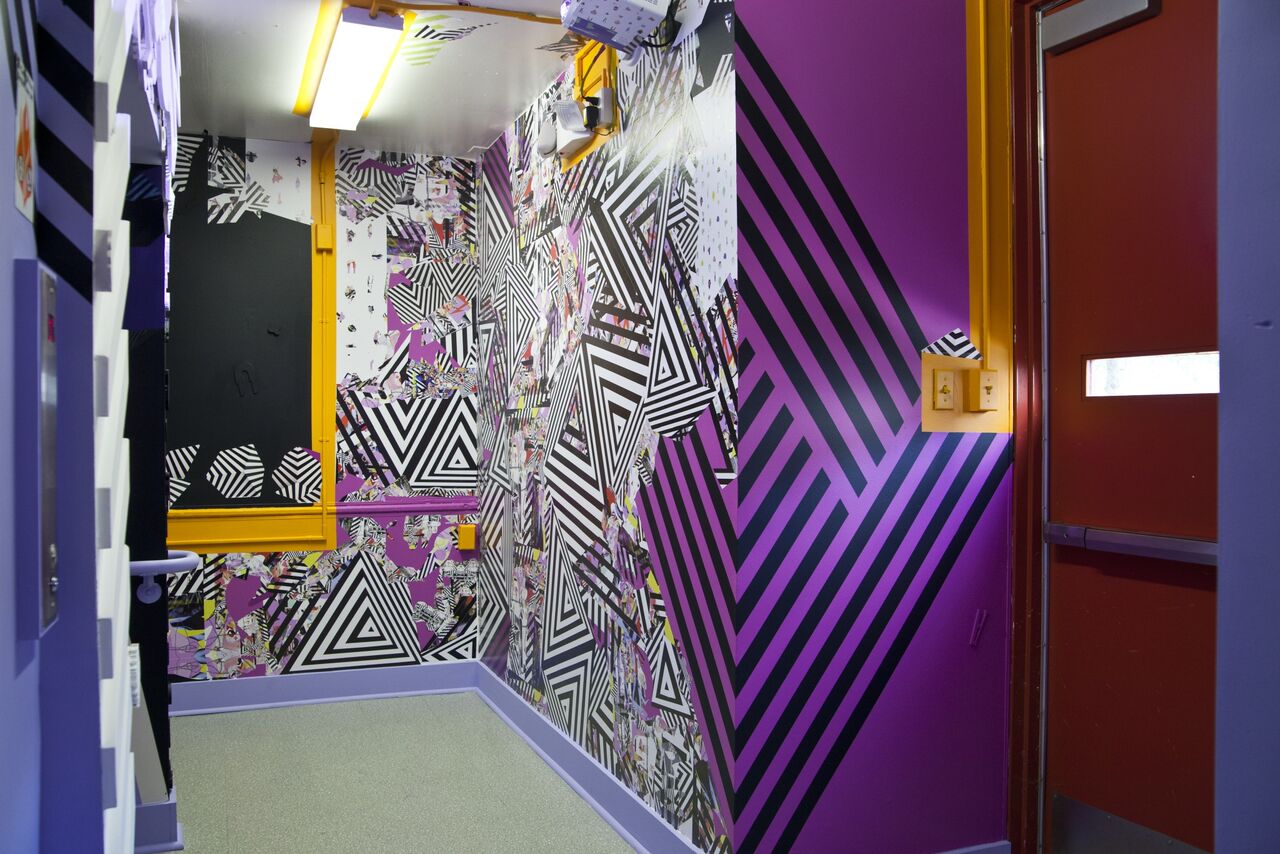 Pattern Perception by Kyle Bauer, Amy Boone-McCreesh, and Katie Duffy
Pattern Perception by Kyle Bauer, Amy Boone-McCreesh, and Katie Duffy

 Front Stoop Back Yard in the School 33 garden by Melissa Webb, Linda DePalma, and Kelley Bell
Front Stoop Back Yard in the School 33 garden by Melissa Webb, Linda DePalma, and Kelley Bell
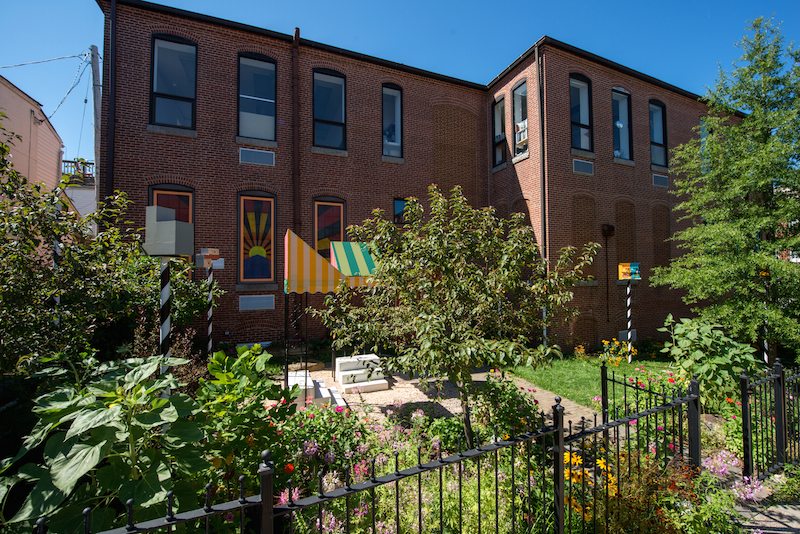
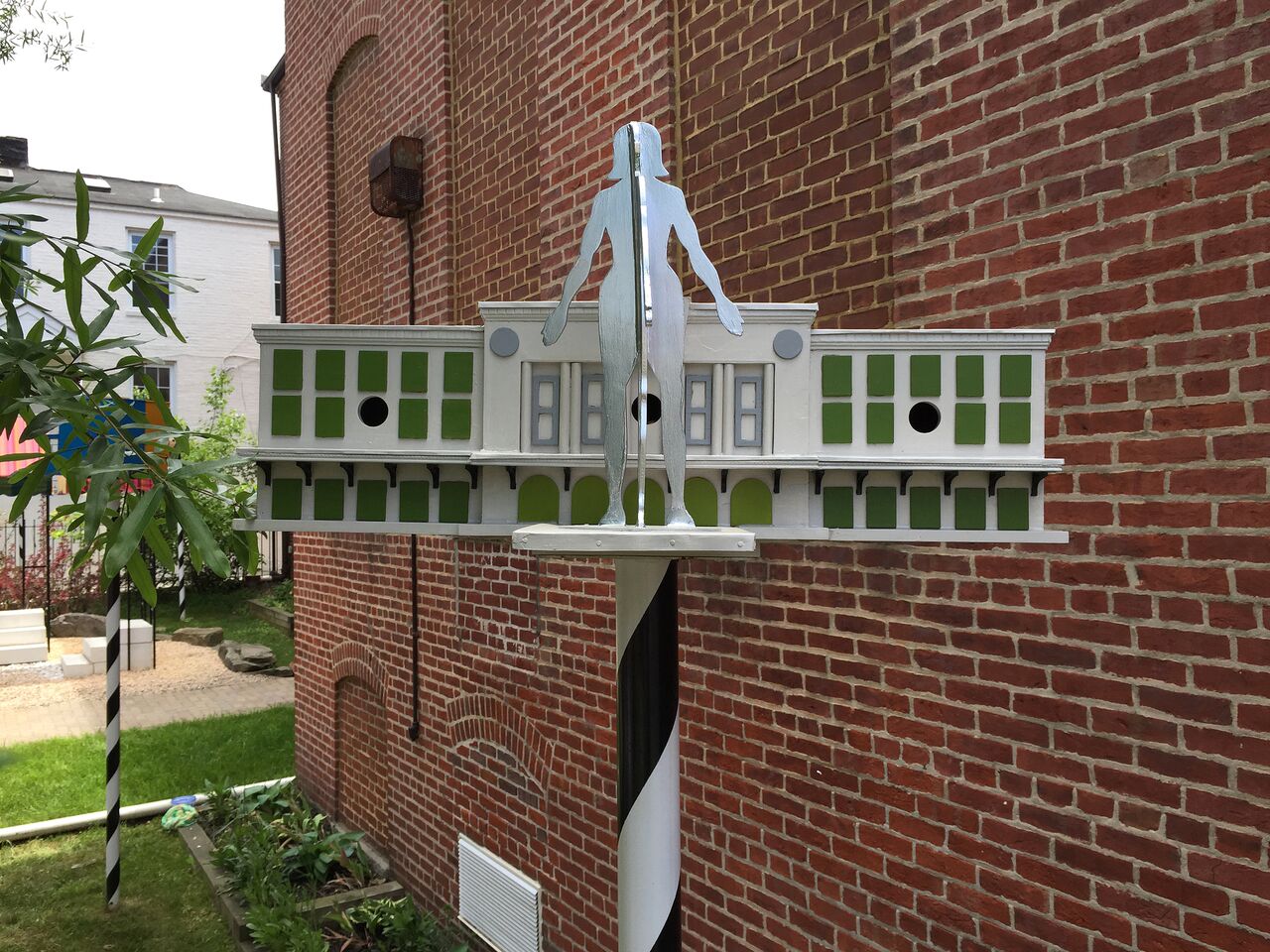
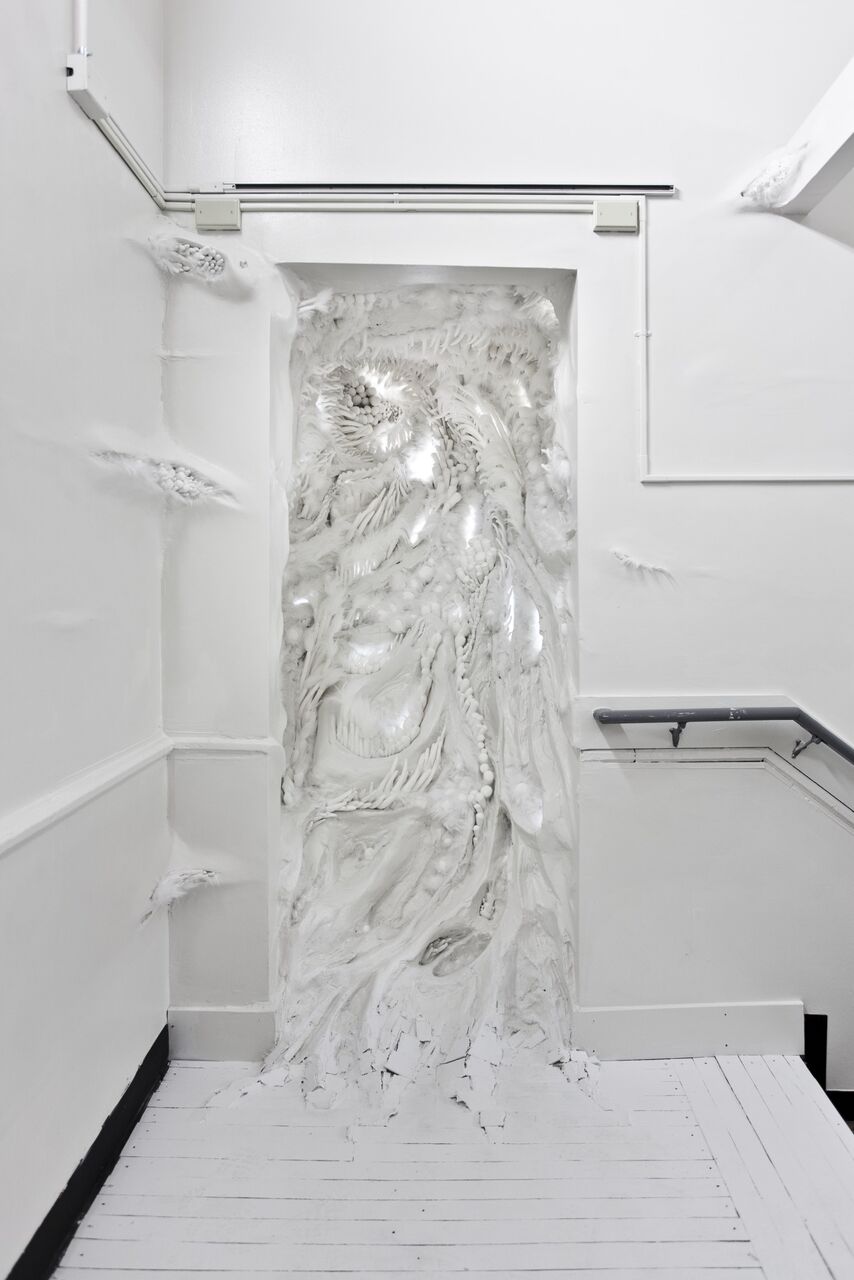 Nanotecture by Jonathan Latino and Jennifer Strunge
Nanotecture by Jonathan Latino and Jennifer Strunge